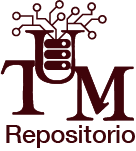
Por favor, use este identificador para citar o enlazar este ítem:
http://repositorio.utm.mx:8080/jspui/handle/123456789/81Registro completo de metadatos
| Campo DC | Valor | Lengua/Idioma |
|---|---|---|
| dc.rights.license | Atribución No Comercial Sin Derivadas | es |
| dc.contributor | ROGELIO VALADEZ BLANCO;39382 | es |
| dc.contributor.advisor | Valadez Blanco, Rogelio | - |
| dc.contributor.author | Ortigoza Reyes, Elisa | - |
| dc.creator | ELISA ORTIGOZA REYES;645087 | es |
| dc.date.accessioned | 2019-06-05T22:59:08Z | - |
| dc.date.available | 2019-06-05T22:59:08Z | - |
| dc.date.issued | 2017-03 | - |
| dc.identifier.citation | Ortigoza, E. (2017). Obtaining protein isolates and polyphenols from quinoa (chenopodium quinoa willd.) through membrane processes (Tesis para obtener el grado de Maestra en Ciencias: Productos Naturales y Alimentos). Universidad Tecnológica de la Mixteca, Huajuapan de León, Oaxaca. | es |
| dc.identifier.uri | http://repositorio.utm.mx:8080/jspui/handle/123456789/81 | - |
| dc.description.abstract | The contribution of high quality protein in the daily diet is a global problem especially in developing countries, where a large segment of the population has no access to animal protein. Although the energy supply from these foods might be adequate, insufficient amounts of essential amino acids can cause malnutrition. In this regard, recent studies indicate that quinoa contains elevated concentrations of high-quality proteins, so the aim of this study was to obtain protein isolates and polyphenols from Peruvian quinoa grains (Chenopodium quinoa Willd.) by alkaline extraction and ultrafiltration membrane processes. For obtaining quinoa protein isolates, the pH of the extraction and the precipitation processes were evaluated using pH ranges from 7 to 12, and 2 to 6, respectively. Subsequently, a cross-flow ultrafiltration step (UF) was performed with a membrane molecular weight cut-off of 5 kDa. The protein and total polyphenols contents in the quinoa seeds were 12.66% (w/w) and 134.92 ± 0.92 mg eq. of sinapic acid/100 g dry weight, respectively. For the extraction stage, a pH of 12 yielded the highest ratio of protein extraction (64%) with respect to the raw protein content; whereas for the precipitation process, a pH of 4 resulted in the highest yield of quinoa protein isolates. Finally, the use of ultrafiltration membranes helped to increase the recovery of quinoa proteins to 80%. The phenolic compounds were recovered from the protein extraction permeates using acid extraction combined with nanofiltration membranes. The nanofiltration process was suitable for the recovery of 79% of the phenolic compounds present in the quinoa flour. It can be concluded that the use of membrane technologies provides a good alternative for obtaining high quality protein isolates from quinoa and for the efficient recovery of phenolic compounds from natural products. | en |
| dc.language.iso | eng | en |
| dc.publisher | Universidad Tecnológica de la Mixteca | es |
| dc.relation.ispartof | REPOSITORIO NACIONAL CONACYT | es |
| dc.rights | openAccess | en |
| dc.rights.uri | http://creativecommons.org/licenses/by-nc-nd/4.0 | en |
| dc.subject | alimento funcional, quinoa, proteinas funcionales | en |
| dc.subject.other | 2 BIOLOGIA Y QUIMICA | es |
| dc.title | Obtaining protein isolates and polyphenols from quinoa (chenopodium quinoa willd.) through membrane processes | en |
| dc.type | Tesis de Maestría | es |
| dc.creator.studiesP | Maestría en Ciencias: Productos Naturales y Alimentos | es |
| dc.type.status | publishedVersion | en |
| Aparece en las colecciones: | Maestría | |
Ficheros en este ítem:
| Fichero | Descripción | Tamaño | Formato | |
|---|---|---|---|---|
| 2017-MCPNA-EOR.pdf | 3.39 MB | Adobe PDF | Visualizar |
Este ítem está sujeto a una licencia Creative Commons Licencia Creative Commons


